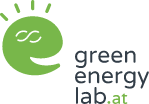Gold from the sewer
Efficient, CO₂-neutral and locally available: Wastewater and process water are often underestimated energy sources. Experts see great potential in their utilisation for the heat transition, as was made clear at Green Energy Lab's Insight Talk.
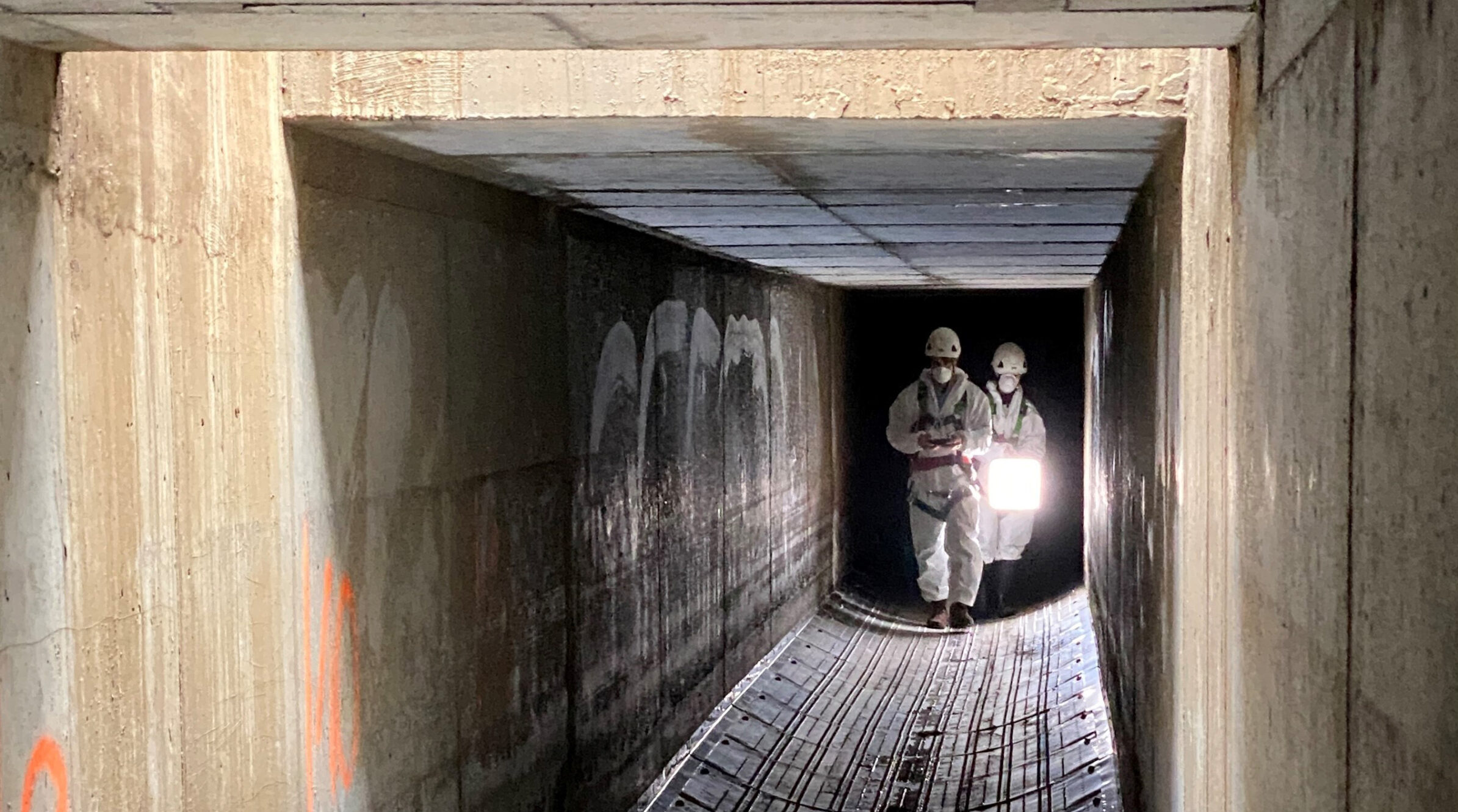
The residual heat from the sewage system can be used for a sustainable energy supply (© Rabmer Gruppe)
27 November 2024 – Wastewater in sewers and sewage treatment plants and process water, such as cooling water from industrial plants, have enormous potential to drive forward the decarbonisation of the heat supply. Around 85 million litres of wastewater flow through the sewers every hour throughout Austria, with temperatures ranging between 8 and 22 degrees Celsius. The energy potential totals 660 megawatts, which could be utilised without the use of fossil fuels. The potential of thermal wastewater utilisation is therefore almost on a similar scale to that of deep geothermal energy.
Since December 2018, the energetic utilisation of wastewater for the generation of heat has been considered “renewable energy” throughout the EU. The utilisation of waste heat from sewers and wastewater treatment plants is regulated by the Arbeitsbehelf 65 from Österreichischer Wasser- und Abfallwirtschaftsverband (ÖWAV, Austrian Water and Waste Management Association). The applications of heat recovery from wastewater or cooling water are diverse and are worthwhile from a heating or cooling load of 50 kW – comparable to a small school or an apartment block with around 10 to 15 residential units. Subsidy programmes additionally increase the economic efficiency of such projects, and amortisation periods of well under 10 years are absolutely realistic.
A quarter of future heating requirements from wastewater?
According to a study by Wiener Universität für Bodenkultur, around 10 to 14 percent of the total heat supply in the building sector could be covered by waste heat from sewers or sewage treatment plant effluent alone, as Klaus Pichler from Rabmer GreenTech explains. Other studies, for example from Germany, would even consider it feasible to cover up to 25 percent of the heat demand in the building sector using wastewater alone.
Practical examples prove that the technology is mature and also works in real-life operation. For example, the VioPlaza in Wien Meidling, a large mixed-use building with offices, shops and a hotel, is cooled entirely by means of an underlying sewer with two lines and a nominal output of up to 6 MW without any further energy input. At 1.2 megawatts, this sewer can also provide almost a third of the heating capacity required for the building, as Flora Prenner from Rabmer GreenTech explains. The solution was previously developed and tested as part of a research project called ThermaFLEX, which was subsidised by the Climate Fund and carried out under the leadership of AEE INTEC as part of the Green Energy Lab research initiative. As part of this project, the Wien Kanal headquarters in Wien Blumental was equipped with the appropriate technology to realise heating and cooling using energy from the sewer.
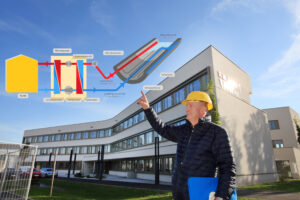
Wastewater heat recovery for heating and cooling the Wien Kanal headquarters, © Klimafonds / Krobath
Gleisdorf sewage treatment plant as a pioneer of the heat transition
An even greater potential for energy utilisation than in the sewer lies in the effluent from wastewater treatment plants due to the constantly high flow rates. This heat source is particularly suitable for grid-connected heat supply, i.e. district or local heating. At the same time, the temperatures of the water discharged into the river are lowered, which in turn is good for the environment.
Two years after the completion of the “Virtual heating plant Gleisdorf“ demonstration project, Erich Rybar, Managing Director of Feistritzwerke in the municipality of Gleisdorf, draws a positive balance. In an ambitious climate protection plan, the town has committed itself to modernising and decarbonising its heating supply. The energy price shock following the war in Ukraine accelerated these efforts and encouraged decision-makers to take an innovative approach. As part of the expansion of the district heating network, the sewage treatment plant was identified as a sustainable source of heat. The use of wastewater and biogas showed such great potential that the motorway route and an ÖBB railway line had to be crossed in order to ensure a connection to the heating network. The sewage treatment plant was expanded into an “energy hub” and supplies around 5,000 MWh of local heat from energy from wastewater and biogas, which currently accounts for around 18 percent of the city’s grid-connected heat supply and corresponds to the consumption of around 200 single-family homes. This saves around 1,100 tonnes of CO₂ per year.
The Managing Director of Feistritzwerke, Erich Rybar, explains the cycle using a simple example: “When we shower in the evening, the water goes to the sewage treatment plant, where it is treated and can later be used to reheat the shower water for the following days.”
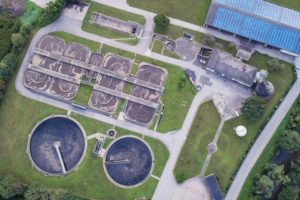
Gleisdorf sewage treatment plant / © Abwasserverband Gleisdorfer Becken
An important realisation from this project is that such innovative solutions can only be successfully implemented through a comprehensive overall concept and close cooperation between the municipal administration, energy suppliers and major consumers. The solution in Gleisdorf was also realised as part of the ThermaFLEX research project as part of the Green Energy Lab. Such demonstrators form the blueprint for similar applications. Analyses and interviews with experts show that over 170 wastewater treatment plants in Austria could adopt this concept. The exciting thing about it is that heat recovery can be implemented at different wastewater treatment plants, from small to very large. One example of a project with XXL dimensions can be found in Vienna: Europe’s largest heat pump has been supplying around 56,000 Viennese households with green district heating at the main wastewater treatment plant in Simmering since 2023. In the final expansion phase, this figure will rise to 112,000 households.
No fire in summer thanks to heat recovery in Pinzgau
In the village of Wald im Pinzgau, Salzburg AG was faced with the challenge of making the heating network fit for the future. The community is characterized by ski tourism and has a correspondingly high demand for hot water and space heating in winter. In summer, this heat demand is drastically reduced, but the biomass boiler still had to be fired on a low flame even in the warm season.
Don’t miss a thing! >> Subscribe right here to our free newsletter!
The BM Retrofit research project investigated how summer operation can be optimized and made climate-neutral. The solution was to use the cooling water from the nearby hydroelectric power plant. Water from the Salzach is used to cool the turbines, which has a correspondingly high heat potential after cooling. An overall concept comprising a heat pump, buffer storage tank and electric instantaneous water heater was implemented. As a result, summer operation runs entirely using the sustainably generated heat from the cooling water without firing the boiler. The total consumption of biomass can thus be reduced by around 1,000 bulk cubic meters, which corresponds to the amount required to supply 30 to 40 households, and therefore makes an essential contribution to conserving resources. In addition, the oil boiler is now only used in exceptional cases, saving 10,000 liters of heating oil and 30 tons of CO₂ locally every year. Salzburg AG is already planning to transfer similar approaches to other heating networks. Public funding from the Flagship Region Energy program of the Climate and Energy Fund has made a significant contribution to setting this innovation process in motion. This is because the profitability of such investments often only becomes apparent after a very long period of time, says Christian Pugl-Pichler from Salzburg AG, and emphasizes: “Without funding, this would have been difficult to implement.”
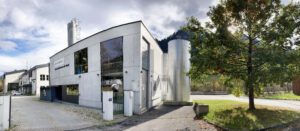
At the Wald im Pinzgau heating plant, Salzburg AG uses the cooling water from the adjacent hydroelectric
power plant to provide heat. This completely eliminates the need for boiler operation in summer and
saves 1,000 bulk cubic meters of biomass and 10,000 liters of heating oil. © Klimafonds / Krobath
Research and demonstration for the heat transition
The three demonstration projects from Green Energy Lab – Gleisdorf, Wald im Pinzgau and Wien Kanal – show that heat recovery from wastewater and cooling water has enormous potential for a sustainable heat supply. These technologies contribute to decarbonization, promote local value creation and reduce dependence on imports of fossil fuels. The combination of research and practice plays a central role here. Green Energy Lab serves as an ideal platform for bringing together energy suppliers, sewer and wastewater treatment plant operators, local authorities and technology providers. Innovative solutions are developed and implemented together, thereby driving forward the heating transition.
“Such concepts for waste heat utilisation offer enormous multiplication potential for the entire local and district heating sector. The use of the remaining waste heat in the demonstrators presented is a prime example of cascading heat generation and the circular economy. Such innovative approaches are the basis for an intelligent and sustainable heat supply for generations to come,” concludes Joachim Kelz, Project Manager of ThermaFLEX and BM Retrofit at AEE INTEC.
Download the experts’ presentations
You are currently seeing a placeholder content of YouTube. To access the actual content, click on the button below. Please note that data will be passed on to third-party providers.
Contact
Ludwig Fliesser
Communications Manager
T: +43 676 471 93 47
E: ludwig.fliesser@greenenergylab.at
